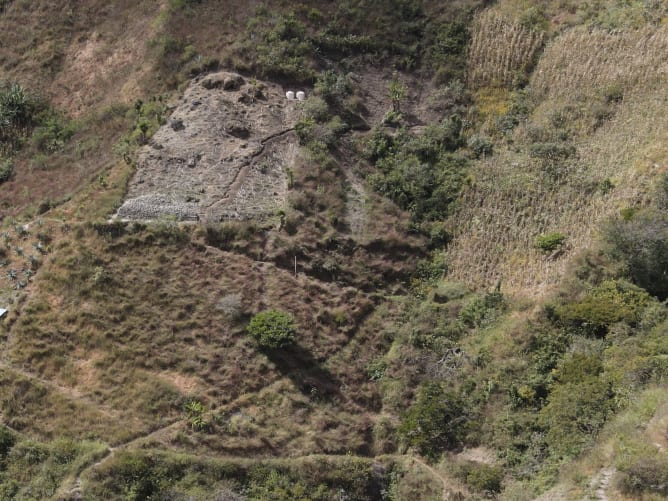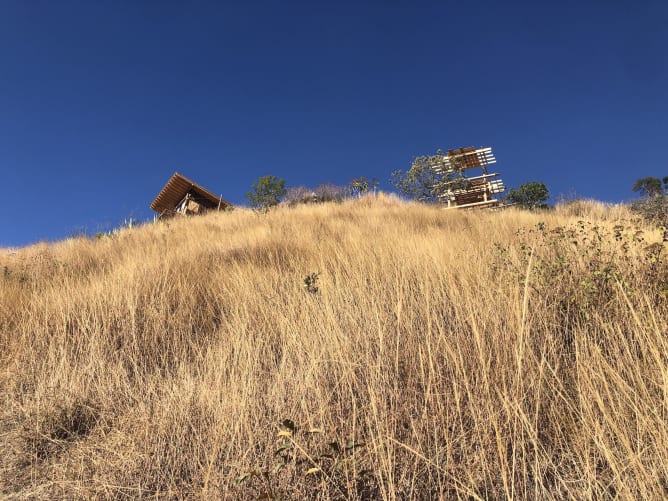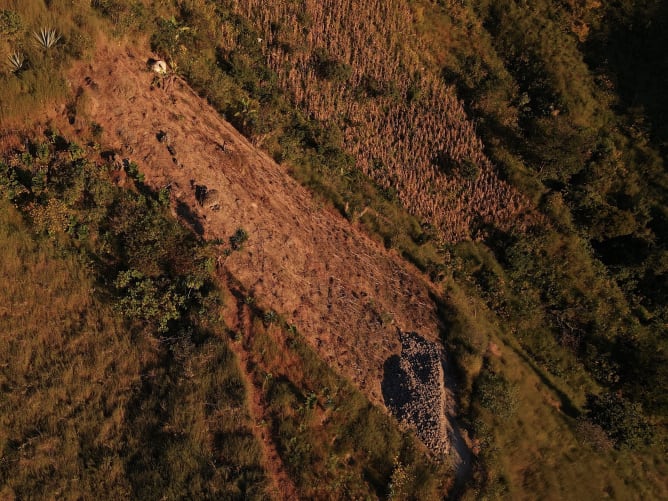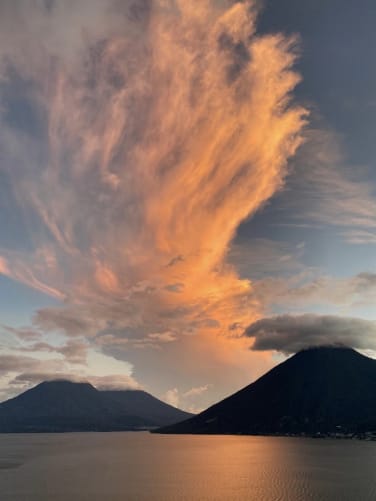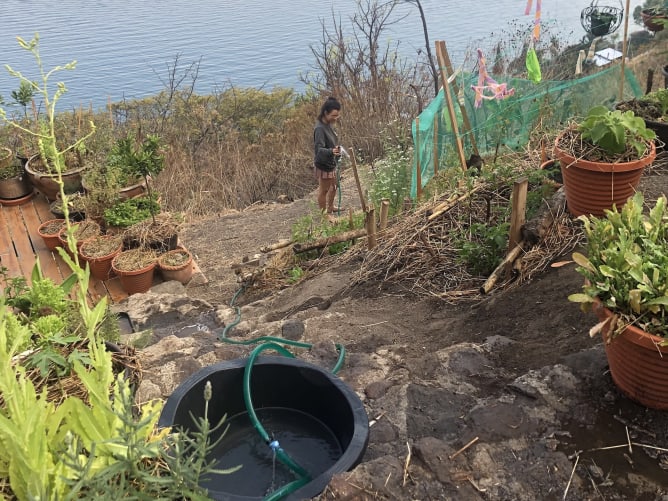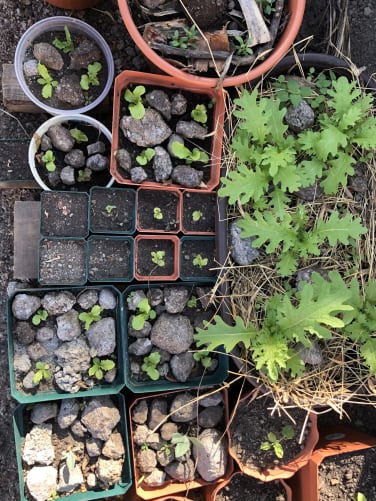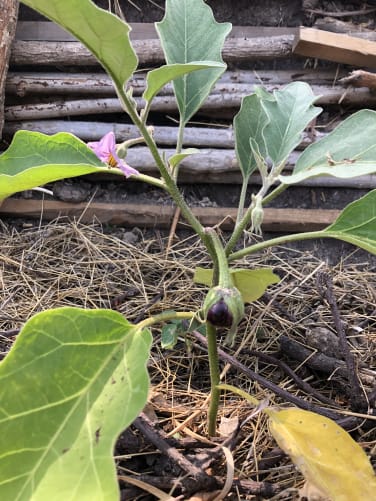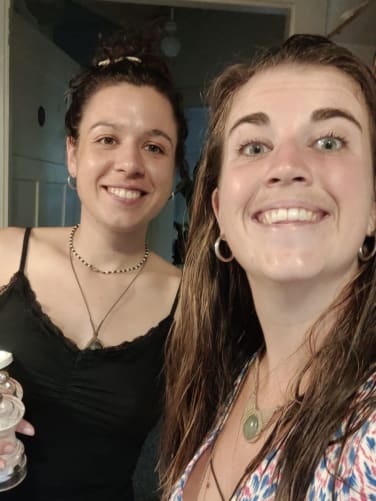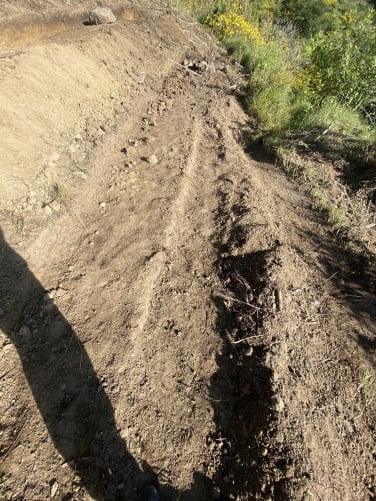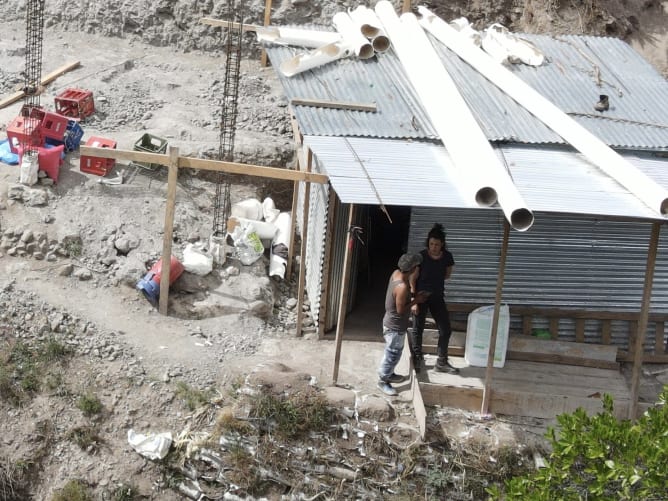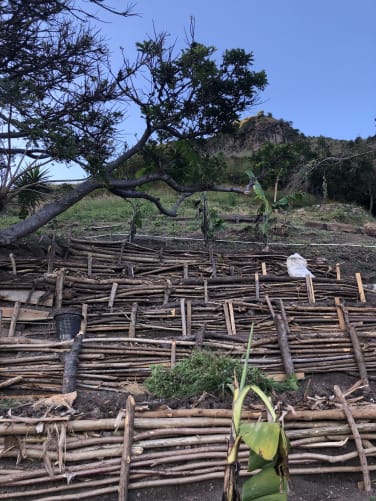This is what it's all about - my vision
I am 25 years old, and through my travels, I found myself in Guatemala. While there, I was offered the opportunity to plan a piece of land using permaculture principles (regenerative agriculture) in exchange for room and board. What was initially meant to be a few months turned into over a year — and it continues! :)
Despite all the beauty that the area around Lake Atitlan has to offer, it is one of the poorest regions in Guatemala. People here live off simple agriculture; the men grow corn, and the women turn the dried, ground corn into simple tortillas with water. As the climate changes, traditional corn farming becomes increasingly unreliable and, consequently, life-threatening.
During the dry season, the hills are barren, dried out, and erode more with every windstorm. When heavy rains come, the soil washes away, and the humus is lost. This vicious cycle seems never-ending and could eventually lead to the end of food production.
I’ve witnessed this desperate situation firsthand, and the lack of solutions has deeply impacted me. That’s why I now want to start my own project: a forest garden for the future. A place where everyone, including the youngest children from the local school, can contribute and be heard. My goal is to create regenerative forest garden systems that will not only ensure future food security but also provide protection from fires during the dry season and create new job opportunities.
The core and vital aim of this forest garden is to establish a regenerative ecosystem with restored water cycles that replenish groundwater and enrich the soil with humus once again. It will be a place full of life and abundance, where people, animals, and plants can thrive, and any surplus can be shared.
I see this project not only as a future initiative for the local community but also as a chance for me to gain more experience and bring this knowledge back to Switzerland. I hope to eventually build something similar in the future because, even here, nature suffers from conventional farming. Additionally, the weather is becoming more extreme, and our mountainous slopes are sliding, no longer able to retain water. A long-term change in mindset is essential, and I’m excited to explore new and creative solutions.
The plan for the forest garden at Lake Atitlan involves the gradual purchase of land that currently suffers from monoculture farming. We will stop soil erosion and degradation on the steep slopes and, using syntropic systems (inspired by Ernst Götsch) and various permaculture elements, transform the land into an edible forest paradise.
By mimicking natural processes and with our intervention, we can achieve in just a decade what would normally take a century. By involving the local community, especially women and children, their ideas and visions will shape the project, ensuring its long-term sustainability and care.
What makes my project special…
Community is the Future – Helping and supporting each other is essential and brings so much joy. I’m determined to make this project a reality, despite the challenges of studying psychology and facing various hurdles along the way. I’ve gained a lot of experience in permaculture, and I know that with the right support, I can succeed in Guatemala too. I’m surrounded by many new friends from different countries, and alongside a few paid workers, they are helping me build this project.
What makes the Forest Garden of the Future special is that all the conveniences we have here in Switzerland are completely absent on the mountain in San Marcos La Laguna (some areas have slopes as steep as 37°). A narrow, steep 50 cm path is the only way up, and all materials have to be ordered — which is already the first challenge, as there are no nurseries or hardware stores nearby. Everything has to be carried up on foot, and all work is done by hand using pickaxes, shovels, and machetes, as there are no machines available.
I find this project challenging, but at the same time, it’s a wonderfully slow-paced and rewarding way of working :)
This is what I need backing for.
Step 1: Land Purchase and Preparation – In the first phase, I will acquire the land and prepare it for the establishment of the syntropic forest garden. This includes erosion control measures, potential land clearing, and initial infrastructure setup (such as storage for tools).
Step 2: Terracing and Water Retention – A key part of the reforestation plan is water retention and the creation of various microclimates. By strategically planting pioneer trees and other vegetation, we aim to increase water infiltration into the soil, reduce runoff, and regulate local microclimates. This will not only improve soil moisture and fertility but also help prevent frequent fires during the dry season by maintaining higher humidity and establishing fire-resistant landscapes!
Step 3: Community Involvement – After the initial months and foundational groundwork, the focus will be on involving different stakeholders. The planting efforts during the rainy season will engage children, local Guatemalan families, and travelers/volunteers. The goal is to foster a sense of shared responsibility, allowing the community to take part in the detailed planning and implementation.
… Further steps will follow once this significant milestone is achieved, including establishing a nonprofit organization under Guatemalan law and transferring the project to this organization.
Breakdown of the target amount of 40,000 CHF:
16,000 CHF for land purchase 13,000 CHF for staff and tools 7,000 CHF for planting, soil/compost 10% of the total (4,000 CHF) goes to the platform fee.
